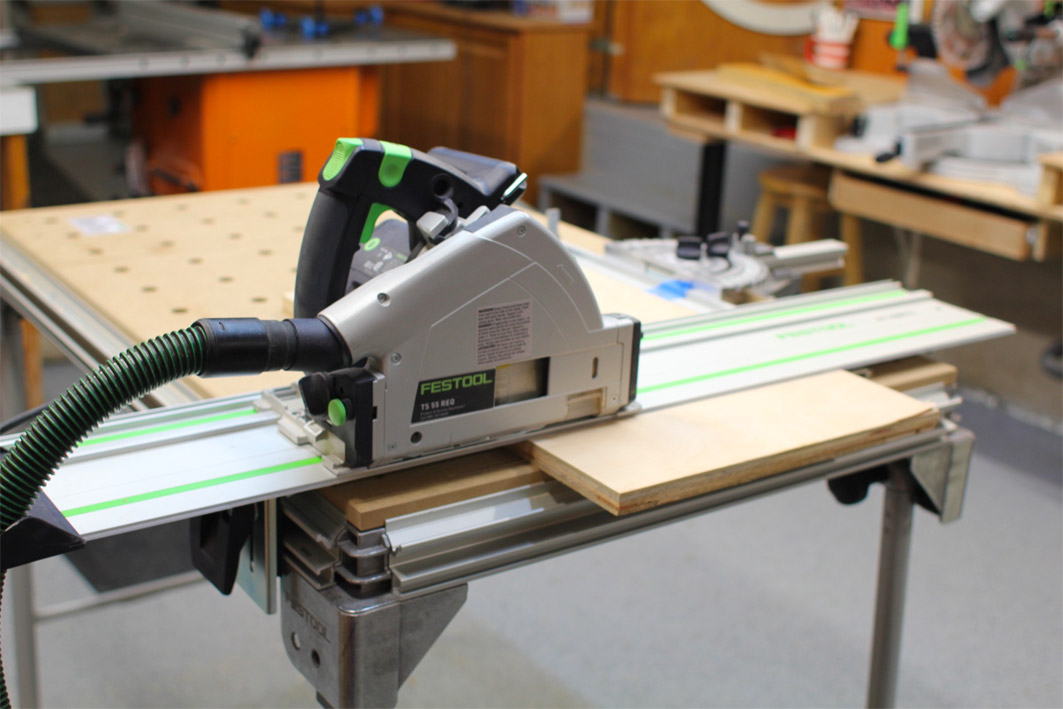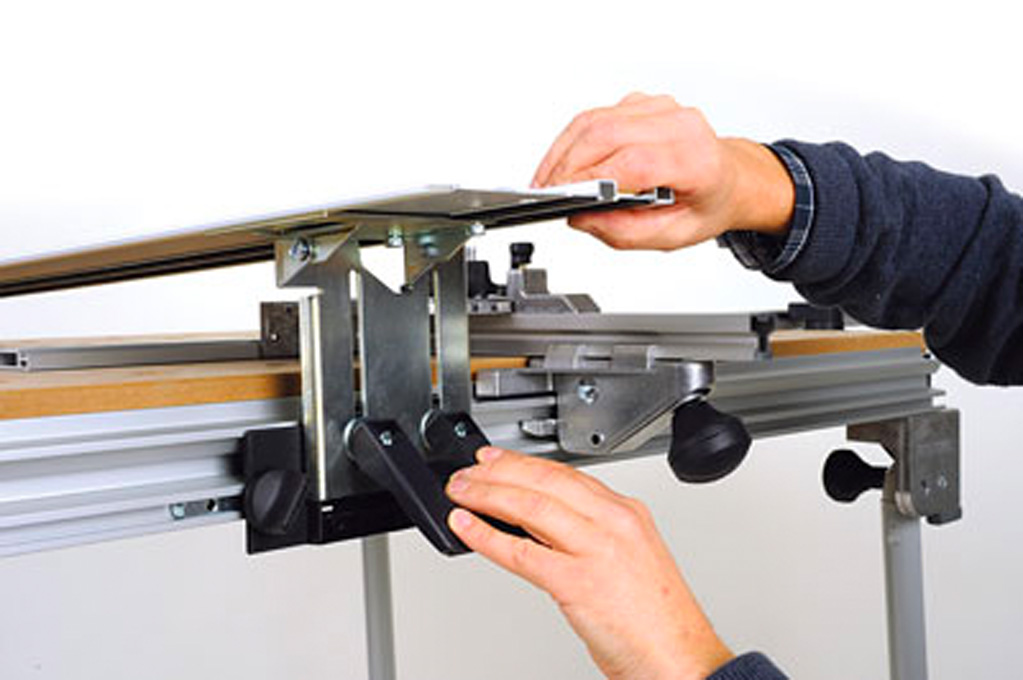derekcohen
Member
- Joined
- Jun 22, 2008
- Messages
- 1,016
In the first segment of the MFT build, the aim was to construct a bench top that would accept the Festool accessories for work holding. The MFT would serve for routing, sanding, carving, and as an outfeed for a jointer, slider and router table.
The 20mm holes were routed using a CNC-made template.


It needs to be understood that the reason for making the MFT was partly due the cost of purchasing one in Australia being excessively expensive (the Festool MFT sells for $1595), particularly so when I am not sure how much use it will get.
A large part of this cost lies in the rail hinge and rail fence, since a typical use of a MFT is for sawing ...

The stability and ease of adjustment of Festool rail hinge has come in for some criticism ...

... which has lead to aftermarket versions becoming available, such as this Dashboard hinge ...

This looks a beautiful piece of equipment, camera-level precise ... but it would cost around $700 landed in Oz.
So I decided to build my own. Two considerations - design and materials. The design is a mix of ideas, some taken from other builds on the Internet, Peter Millard's hinge design ..
=PeterMillard
.. and a few of my own. Fabricating in metal was not feasible as I do not have the tools to work it. Using ply wood, MDF and even hardwood was rejected as these are not durable enough. In the end I settled on nylon cutting boards - cheap and very hard wearing.

The nylon cannot be glued, and so all bolt holes were tapped for threads, and screwed together ...

The dimension across the top is 8" and the height is 5 1/2".
This holder is used for both the hinge side (where the rail is connected) and the pin side (where the rail is squared to the table) ...

Two key factors are present: each part is built with care for precision - errors are additive and will affect accuracy. Part of this is that the hinge must not have any play.


The rail hinge is set at a height below the bench top when not in use.
The two knobs (above right) tighten the connector to the rail ...

The rail connector has rebates to fit the rail ...

The pin in the pin holder is square and sized for a tight slip fit ...

EDIT: since building, the pin has been moved over to the left side of the holder. This is to increase/maximise the support the rail receives.
All together - the rail swings over ....

... and rests on the pin ...

The rail is able to be lifted up out of the way in readiness to position a board ..

All feels rock solid.
Checks for square against a rear fence ...

... and against the front of the bench (the ends are exactly parallel and all the holes are square) ...

Lastly, a stop is added to both hinge and pin holders, to allow exact re-positioning ...

All the best for the festive season.
Regards from Perth
Derek
The 20mm holes were routed using a CNC-made template.


It needs to be understood that the reason for making the MFT was partly due the cost of purchasing one in Australia being excessively expensive (the Festool MFT sells for $1595), particularly so when I am not sure how much use it will get.
A large part of this cost lies in the rail hinge and rail fence, since a typical use of a MFT is for sawing ...

The stability and ease of adjustment of Festool rail hinge has come in for some criticism ...

... which has lead to aftermarket versions becoming available, such as this Dashboard hinge ...

This looks a beautiful piece of equipment, camera-level precise ... but it would cost around $700 landed in Oz.
So I decided to build my own. Two considerations - design and materials. The design is a mix of ideas, some taken from other builds on the Internet, Peter Millard's hinge design ..
=PeterMillard
.. and a few of my own. Fabricating in metal was not feasible as I do not have the tools to work it. Using ply wood, MDF and even hardwood was rejected as these are not durable enough. In the end I settled on nylon cutting boards - cheap and very hard wearing.

The nylon cannot be glued, and so all bolt holes were tapped for threads, and screwed together ...

The dimension across the top is 8" and the height is 5 1/2".
This holder is used for both the hinge side (where the rail is connected) and the pin side (where the rail is squared to the table) ...

Two key factors are present: each part is built with care for precision - errors are additive and will affect accuracy. Part of this is that the hinge must not have any play.


The rail hinge is set at a height below the bench top when not in use.
The two knobs (above right) tighten the connector to the rail ...

The rail connector has rebates to fit the rail ...

The pin in the pin holder is square and sized for a tight slip fit ...

EDIT: since building, the pin has been moved over to the left side of the holder. This is to increase/maximise the support the rail receives.
All together - the rail swings over ....

... and rests on the pin ...

The rail is able to be lifted up out of the way in readiness to position a board ..

All feels rock solid.
Checks for square against a rear fence ...

... and against the front of the bench (the ends are exactly parallel and all the holes are square) ...

Lastly, a stop is added to both hinge and pin holders, to allow exact re-positioning ...

All the best for the festive season.
Regards from Perth
Derek
